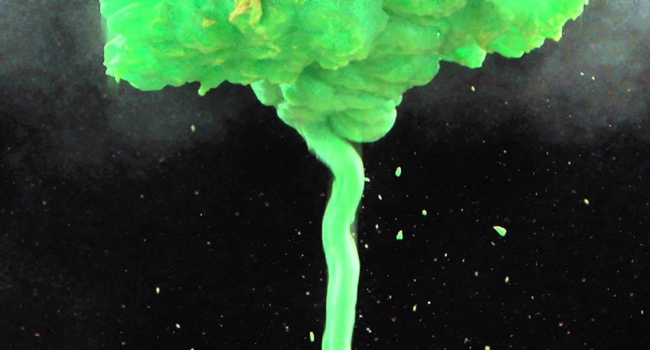80. Wilco – Summerteeth (1999):
 Why Jeff Tweedy got the brunt of the “alt-folk” backlash is a little inexplicable. There were certainly worse offenders (Ryan Adams and Jay Farrar, among others), but the most egregious case against Tweedy being alt-folk’s scapegoat is that he is an absolutely fantastic popsmith. Tweedy’s pre-masterpiece album Summerteeth is affirmation of that, and quite a masterpiece in its own right. Weighing a ridiculous 14 tracks, nearly hour long barrage of guitar pop, Tweedy managed to create some of Wilco’s most memorable, crowd-marshaling songs out of none of Wilco’s former tropes. “I’m Always In Love,” “A Shot in the Arm,” “Can’t Stand It,” “Via Chicago” all stand in the top 20 of the Wilco catalogue, a startling feat when you realize it’s oft-referred to as the black sheep of the Wilco discography. –Tyler Remmert
Why Jeff Tweedy got the brunt of the “alt-folk” backlash is a little inexplicable. There were certainly worse offenders (Ryan Adams and Jay Farrar, among others), but the most egregious case against Tweedy being alt-folk’s scapegoat is that he is an absolutely fantastic popsmith. Tweedy’s pre-masterpiece album Summerteeth is affirmation of that, and quite a masterpiece in its own right. Weighing a ridiculous 14 tracks, nearly hour long barrage of guitar pop, Tweedy managed to create some of Wilco’s most memorable, crowd-marshaling songs out of none of Wilco’s former tropes. “I’m Always In Love,” “A Shot in the Arm,” “Can’t Stand It,” “Via Chicago” all stand in the top 20 of the Wilco catalogue, a startling feat when you realize it’s oft-referred to as the black sheep of the Wilco discography. –Tyler Remmert
79. J Dilla – Donuts (2006):
 Anybody who listens to hip-hop has heard the late James Dewitt Yancey (affectionately known as “J Dilla” and “Jay Dee” by his peers), whether or not they’ve actually heard of him. The beatmaker behind other beatmakers, Dilla is responsible for crafting the neo-soul grooves behind artists such as De La Soul, Kanye West, A Tribe Called Quest, and Common. Donuts, the last record he released before his untimely passing, is unquestionably a labor of love: Terminally ill, Dilla composed 29 of the 31 tracks in a hospital bed. And though 31 cuts (each barely clocking in at over a minute long) would hardly seem the kind of material suitable for a full-length release, Donuts is best experienced from start to finish. Each track plays as a part of a greater, cohesive whole; a true feat for an instrumental release. Listen, and one will find a dizzying array of sounds, each slowed-down and sped-up at the precise time for ear-candy gold. Donuts simply feels eternal; a testament to the legacy of a true artist. –John Taylor
Anybody who listens to hip-hop has heard the late James Dewitt Yancey (affectionately known as “J Dilla” and “Jay Dee” by his peers), whether or not they’ve actually heard of him. The beatmaker behind other beatmakers, Dilla is responsible for crafting the neo-soul grooves behind artists such as De La Soul, Kanye West, A Tribe Called Quest, and Common. Donuts, the last record he released before his untimely passing, is unquestionably a labor of love: Terminally ill, Dilla composed 29 of the 31 tracks in a hospital bed. And though 31 cuts (each barely clocking in at over a minute long) would hardly seem the kind of material suitable for a full-length release, Donuts is best experienced from start to finish. Each track plays as a part of a greater, cohesive whole; a true feat for an instrumental release. Listen, and one will find a dizzying array of sounds, each slowed-down and sped-up at the precise time for ear-candy gold. Donuts simply feels eternal; a testament to the legacy of a true artist. –John Taylor
78. Stereolab – Emperor Tomato Ketchup (1996):
 On Emperor Tomato Ketchup, the “groop” that rejuvenated “space-age bachelor pad music” finally capitalized on the potential of their “Muppets play Kraftwerk” approach. Sung in half-English, half-French and half-nonsense, Laetitia Sadier’s lovely scatting alto and the meticulously arranged backing vocals and overdubs weave a layer of honey-soaked velvet atop their dream-pop horn and synthesizer mish-mosh. The album was recorded, produced and engineered by the sextet and John McEntire (of Tortoise and The Sea and Cake fame) at Idful Studios in Chicago. This is what 60’s stereophiles thought the future would sound like. And apparently, the future sounds like a wobbly wheel on an interstellar flight attendant’s drink cart, slowly rolling down the aisle and about to crash out the back of a starship passenger cabin and drift off to infinity and beyond. A majestic and enveloping trip, from one whacky whack-a-mole world to the next. Like an Esquivel wet dream. –Craig Bechtel
On Emperor Tomato Ketchup, the “groop” that rejuvenated “space-age bachelor pad music” finally capitalized on the potential of their “Muppets play Kraftwerk” approach. Sung in half-English, half-French and half-nonsense, Laetitia Sadier’s lovely scatting alto and the meticulously arranged backing vocals and overdubs weave a layer of honey-soaked velvet atop their dream-pop horn and synthesizer mish-mosh. The album was recorded, produced and engineered by the sextet and John McEntire (of Tortoise and The Sea and Cake fame) at Idful Studios in Chicago. This is what 60’s stereophiles thought the future would sound like. And apparently, the future sounds like a wobbly wheel on an interstellar flight attendant’s drink cart, slowly rolling down the aisle and about to crash out the back of a starship passenger cabin and drift off to infinity and beyond. A majestic and enveloping trip, from one whacky whack-a-mole world to the next. Like an Esquivel wet dream. –Craig Bechtel
77. The Field – From Here We Go Sublime (2007):
 The Field is one of the many monikers for Sweedist electronic artist Axel Willner. From Here We Go Sublime is an organic, glitched out, looped up, exploration into more human trance and techno sound. Axel uses many off beat samples to lay foundation for the song, and then builds off of that. The songs on From Here We Go Sublime are from the heart, though they are electronic, as when recording if Axel’s computer overloaded and created an explosion of sound, he left it in the mix. The punk influence through Axel’s guitar samples gives the album a raw and unapologetic feel. This techno is like nothing else, it feels real, it’s breathing and dancing on its own. The songs are dissonant and introspective like shoe-gaze, yet could still be played successfully in a club. –Ian Dick Jones
The Field is one of the many monikers for Sweedist electronic artist Axel Willner. From Here We Go Sublime is an organic, glitched out, looped up, exploration into more human trance and techno sound. Axel uses many off beat samples to lay foundation for the song, and then builds off of that. The songs on From Here We Go Sublime are from the heart, though they are electronic, as when recording if Axel’s computer overloaded and created an explosion of sound, he left it in the mix. The punk influence through Axel’s guitar samples gives the album a raw and unapologetic feel. This techno is like nothing else, it feels real, it’s breathing and dancing on its own. The songs are dissonant and introspective like shoe-gaze, yet could still be played successfully in a club. –Ian Dick Jones
76. Justin Timberlake – FutureSex/LoveSounds (2006):
 Justin Timberlake didn’t have to make FutureSex/LoveSounds. He didn’t need the respect (which he had already earned with his highly-successful first solo album, Justified) and he certainly didn’t need the money. And yet, he did make it, and this goes a great way in showing how unique of an album FutureSex is. Perhaps the most impressive quality of the album is how JT doesn’t underestimate his audience. A pop album without a song under four minutes? At its best moments, FutureSex is almost like the Kid A of radio-ready pop albums—a bold statement to anyone who believes an artist has to give up commercial success in order to mess with the formula. Aside from “Losing My Way,” which can be cringe-inducing, it is nearly perfect. –Derek Gossi
Justin Timberlake didn’t have to make FutureSex/LoveSounds. He didn’t need the respect (which he had already earned with his highly-successful first solo album, Justified) and he certainly didn’t need the money. And yet, he did make it, and this goes a great way in showing how unique of an album FutureSex is. Perhaps the most impressive quality of the album is how JT doesn’t underestimate his audience. A pop album without a song under four minutes? At its best moments, FutureSex is almost like the Kid A of radio-ready pop albums—a bold statement to anyone who believes an artist has to give up commercial success in order to mess with the formula. Aside from “Losing My Way,” which can be cringe-inducing, it is nearly perfect. –Derek Gossi
75. The Decemberists – Picaresque (2005):
 Effortlessly dispelling all limitations, Picaresque, proclaimed a collection of dynamic, well-put-together story songs. Each track, sounding more literary and less theatrical than the other boasts triumphs such as the near nine-minute “Mariner’s Revenge Song” and the pulsing smooth-melded “On the Bus Mall.” Another noteworthy track, “16 Military Wives” breaks from the album’s literary stronghold to not a story, but a protest song. An album ridden with anger, passion, and benevolence Picaresque created a sound for the masses previously untouched by the likes of The Decemberists. –Jon White
Effortlessly dispelling all limitations, Picaresque, proclaimed a collection of dynamic, well-put-together story songs. Each track, sounding more literary and less theatrical than the other boasts triumphs such as the near nine-minute “Mariner’s Revenge Song” and the pulsing smooth-melded “On the Bus Mall.” Another noteworthy track, “16 Military Wives” breaks from the album’s literary stronghold to not a story, but a protest song. An album ridden with anger, passion, and benevolence Picaresque created a sound for the masses previously untouched by the likes of The Decemberists. –Jon White
74. Sleater-Kinney – The Woods (2006):
 The swan song for Sleater-Kinney is a culmination of everything they’ve worked toward throughout their 12-year career. The Woods is their heaviest, most raucous album; the guitars are thick, the drums are huge and Corin Tucker’s vocals are constantly coming unhinged. The band is downright fierce as best displayed by “The Fox” and “Entertain.” It is a beast of a record. And, The Woods showcases a more album-centric recording process where the songs sound like the belong together, in that order. It’s impossible to fully appreciate the uncharacteristically long rock-out of “Let’s Call It Love” without letting it slide into closing track “Night Light.” It’s a noisy record – Dave Fridmann will never produce anything like this again – but the noise just serves to give it more character. Most importantly, though, amidst all the fuzz and purposely clipping audio comes real heart and soul. The band have always had it on display, but never before has it felt so raw and so tangible. –Chris Favata
The swan song for Sleater-Kinney is a culmination of everything they’ve worked toward throughout their 12-year career. The Woods is their heaviest, most raucous album; the guitars are thick, the drums are huge and Corin Tucker’s vocals are constantly coming unhinged. The band is downright fierce as best displayed by “The Fox” and “Entertain.” It is a beast of a record. And, The Woods showcases a more album-centric recording process where the songs sound like the belong together, in that order. It’s impossible to fully appreciate the uncharacteristically long rock-out of “Let’s Call It Love” without letting it slide into closing track “Night Light.” It’s a noisy record – Dave Fridmann will never produce anything like this again – but the noise just serves to give it more character. Most importantly, though, amidst all the fuzz and purposely clipping audio comes real heart and soul. The band have always had it on display, but never before has it felt so raw and so tangible. –Chris Favata
73. My Morning Jacket – Z (2006):
 The turning point from My Morning Jacket’s country-rock origins to their more experimental/alternative current sound and also their greatest work is simply titled Z. Projecting a dark, foggy atmosphere, listening to this album is almost a spiritual experience, especially on those late night drives down the open road. It’s so easy to get wrapped up in the sound, which isn’t necessarily more dense or engulfing as their prior albums so much as it is more intense and expressive. This is readily apparent in Jam James’ vocals, further up in the mix and better than ever. Where It Still Moves projects a comfortable night in a lone log cabin somewhere in the woods, Z puts the listener outside, forcing the listener to make the journey to safety, resulting in all sort of emotion followed by self-discovery. Something like that. –Chris Favata
The turning point from My Morning Jacket’s country-rock origins to their more experimental/alternative current sound and also their greatest work is simply titled Z. Projecting a dark, foggy atmosphere, listening to this album is almost a spiritual experience, especially on those late night drives down the open road. It’s so easy to get wrapped up in the sound, which isn’t necessarily more dense or engulfing as their prior albums so much as it is more intense and expressive. This is readily apparent in Jam James’ vocals, further up in the mix and better than ever. Where It Still Moves projects a comfortable night in a lone log cabin somewhere in the woods, Z puts the listener outside, forcing the listener to make the journey to safety, resulting in all sort of emotion followed by self-discovery. Something like that. –Chris Favata
72. Coldplay – A Rush of Blood to the Head (2002):
 From the very first, cinematic chords of “Politik” to the heartbreaking piano of “The Scientist” and the sweeping beauty of “Clocks,” Coldplay’s second album sets a new standard for rock music, a truth especially evident in the way that every British rock band to use piano since the release of Rush of Blood has been unfavorably compared to Chris Martin, et al. The British pop-rock genre that Coldplay has come to define stems from this album, more rounded than the band’s first, and its impressive resume of number ones. Even the album’s lesser-known tracks – believe it or not, there are a couple – are prime examples of Martin’s clear-ringing vocals and the band’s driving rhythms. –Leanne Howard
From the very first, cinematic chords of “Politik” to the heartbreaking piano of “The Scientist” and the sweeping beauty of “Clocks,” Coldplay’s second album sets a new standard for rock music, a truth especially evident in the way that every British rock band to use piano since the release of Rush of Blood has been unfavorably compared to Chris Martin, et al. The British pop-rock genre that Coldplay has come to define stems from this album, more rounded than the band’s first, and its impressive resume of number ones. Even the album’s lesser-known tracks – believe it or not, there are a couple – are prime examples of Martin’s clear-ringing vocals and the band’s driving rhythms. –Leanne Howard
71. Animal Collective – Strawberry Jam (2007):
 Strawberry Jam was somewhat of a transitional album for Animal Collective – moving further away from their previous experimental folk sound and into a avant-pop group with a heavy electronic element – and as a transitional album, it’s surprisingly cohesive. The sound is fully-fleshed, sweet and tangy like its namesake. Bridging the wacky melodic sense of 2004’s Sung Tongs with the with the refined pop sensibilities of what would be 2009’s Merriweather Post Pavilion are tracks “Peacebone,” “Chores” and most notably “Fireworks,” which may still stand as their most affecting song to date. Strawberry Jam is at times cacophonous, at times bouncy, and other times subdued, but it is always beneath a strong melody, fashioned by some of the most inventive minds of their era. –Chris Favata
Strawberry Jam was somewhat of a transitional album for Animal Collective – moving further away from their previous experimental folk sound and into a avant-pop group with a heavy electronic element – and as a transitional album, it’s surprisingly cohesive. The sound is fully-fleshed, sweet and tangy like its namesake. Bridging the wacky melodic sense of 2004’s Sung Tongs with the with the refined pop sensibilities of what would be 2009’s Merriweather Post Pavilion are tracks “Peacebone,” “Chores” and most notably “Fireworks,” which may still stand as their most affecting song to date. Strawberry Jam is at times cacophonous, at times bouncy, and other times subdued, but it is always beneath a strong melody, fashioned by some of the most inventive minds of their era. –Chris Favata



